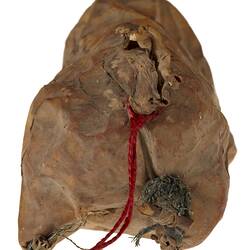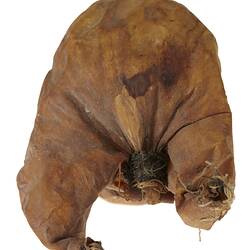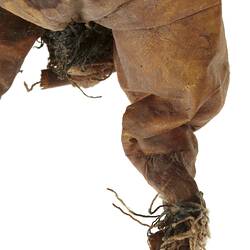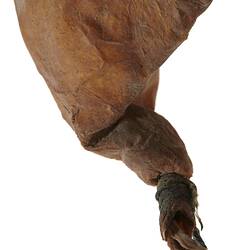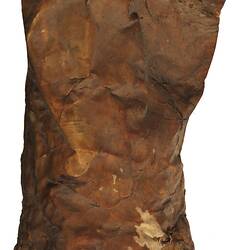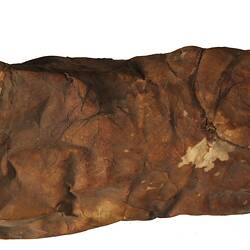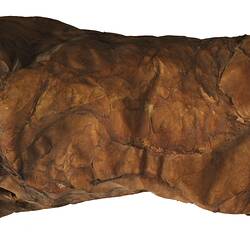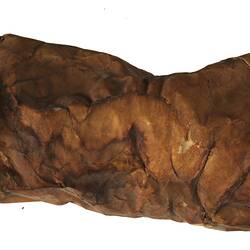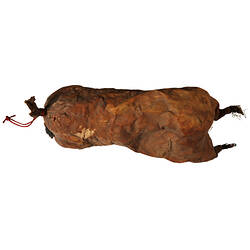Summary
This lukomb or kowapp (animal skin bag) is made from the skin of a rabbit. Aboriginal groups in the Lake Eyre area of South Australia used the lukomb to carry water over great distances. Depending on the animal used, lukomb could hold anywhere from 1 to 19 litres of water.
While the skin of most small animals could be used to make lukomb, the skins of possum, male wallaby and brush kangaroo were favoured until the arrival of the rabbit in the 1880s, which devastated the local ecosystem, replacing many native animals. In some parts of Victoria, Aboriginal groups also used animal skins for carrying water; they preferred the skin of the possum. The vessel was carried with a string formed into a loop passed over the wearer's head, so that the skin of water hung down the back.
To make the bag, the extremities of the animal were removed and the skin was turned so that the fur was on the inside. During this process the hair was plucked, any remaining fur singed off. All openings except the one at the neck were pinned together firmly with a rib bone of the animal, and then tied with fur string under the bone, making the skin water-tight. The skin was then inflated through the hole at the neck and immersed in an astringent fluid, known as yearda, made from acacia bark, and left for two or three hours. It was then re-inflated, tied at the neck and left to dry. This processed tanned the animal skin, preventing decomposition through bacterial growth.
Local Name
Lukomb or Kowapp
Physical Description
Animal skin bag.
Significance
This water carrier comes from the collection of Charles Glover, who was a mayor of Adelaide in the early twentieth century. Glover obtained objects collected by George "Poddy" Aiston, who was based at the Birdsville Track as a policeman and sub-Protector from 1912 to 1923. During this time Aiston documented the lives of Wangkangurru people of the eastern Lake Eyre region through artefacts and photographs.
More Information
-
Object/Medium
Bag
-
Maker
-
Cultural Groups
-
Locality
-
Date Produced
-
Collector
-
Object Measurements
320 mm (Length), 105 mm (Width), 130 mm (Height)
-
Classification
-
Date Made
-
Maker
-
Clan/Language Group
-
Place Made
-
Indigenous Region
-
Keywords
-
Collection Names
-
Type of item
-
Discipline
-
Category
-
Collecting Areas

